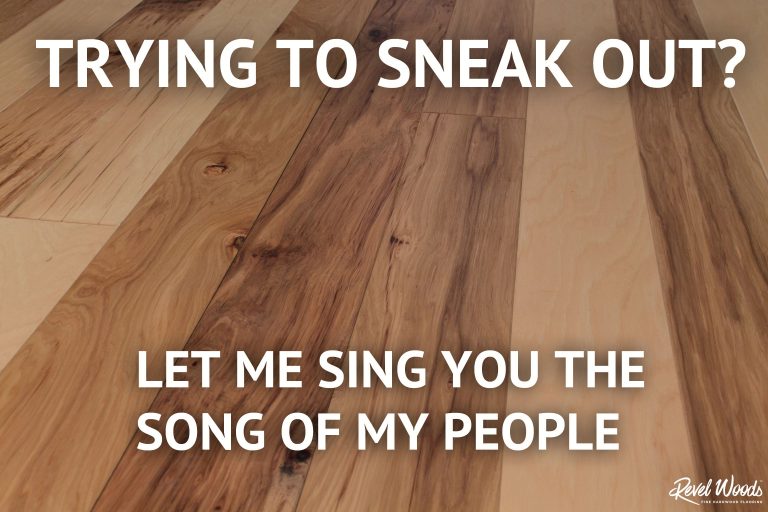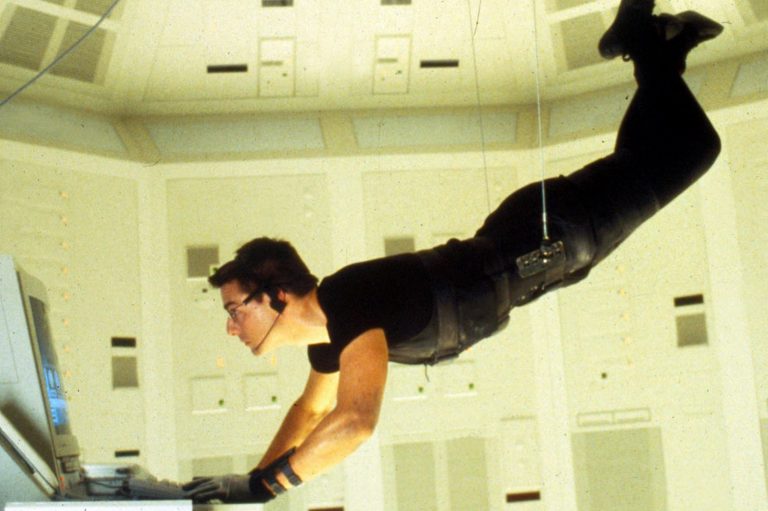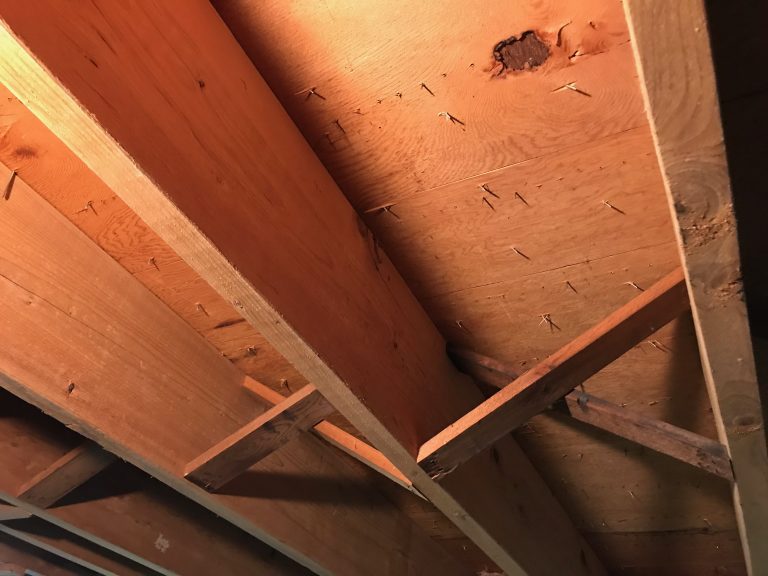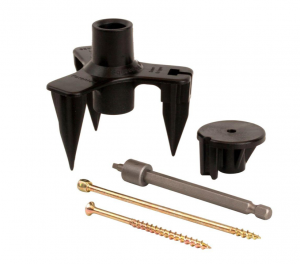More information than you could ever want on the subject.
I have two small children. That means sleep is not a common thing in my house. If we do manage to get a quiet moment by getting both kids to sleep, that’s only the first part of the challenge. The next part is actually getting past them to get downstairs without waking them up.
You see, we live in a two story colonial built in the 1960s. It’s a great house, with all hardwood floors (like I’d have it any other way), but the flooring used when the house was built was 1″ wide 5/16″ thick top-nailed flooring known in layman’s terms as, “Rochester strip.”
It looks nice enough, but….

An oh what a pleasant song it isn’t…
It squeaks.
I mean it really squeaks.
Trying to move around my upstairs undetected for any reason brings up images of Tom Cruise hacking into the CIA.

“Oh you have a standing desk?… How cute”
If you google “squeaky hardwood floors” you get all kinds of fun results – literally everything from drilling big screws in your floor to baby powder is suggested. The question is, are any of these a good idea?
To The Expert-Mobile!
Like most things involving potentially large, long-term, structural changes to your home, you should ask somebody smarter than you before you do something your spouse is NEVER going to let you live down (found that out the hard way).
In my case, I went to my friend Brett, he’s the technical director for the National Wood Flooring Association, so if he doesn’t know what he’s talking about then our entire industry has larger problems than squeaky hardwood floors.

Brett Miller, Technical Director for the NWFA
gets paid to know more about flooring than most people.
“Any squeaking noise is made by two pieces of wood rubbing together. That could be the floor, the subfloor, or a combination of both.” Brett told me, “More often than not, the squeaking people hear is actually caused by the subfloor, not the hardwood floor itself.”
What causes the movement?
“Usually, it’s a fastener issue.” Said Brett, “Using the wrong type of fasteners, or the wrong nailing schedule are the most common culprits, but not the only ones. Uneven spots in the subfloor, or warped or uneven joists can cause pivot points too.”
“Any time there is a pivot point, there’s the potential for rubbing. Usually, the best thing is to fix the pivot point in the subfloor and that won’t allow the wood floor to move.”
He’s right about that, and usually you can access the problematic subfloor from below via your basement or crawlspace.

A typical unfinished basement, if you can find the squeak point, it’s easier to fix it here. It’s also a great place to find spiders.
In my specific case, the floors on my lower level don’t squeak (probably because I replaced them myself and I’m actually pretty handy when it comes to flooring — one of the perks of co-founding a hardwood flooring company I guess).
What do you do if you can’t reach the subfloor from the bottom, like a second story, or you have a finished basement? Is there any merit to using talcum powder or drilling large screws in my floor?
“That’s definitely a lot harder.” Said Brett, “You’re probably looking at more temporary solutions until you can repair the source of the problem.”

Squeeeeek (five “e’s”) No More!
What about some of the quick fix home remedies like Squeeeek No More (that’s exactly five “e’s” OK? Beware of imitators!), or talcum powder?
“Believe it or not, those can work.” Brett told me, “But in the case of the lubricating powders, they only work until the powder wears off, then you have to reapply it.”
“In the case of the breakaway screws (he used the generic term – assumably because he couldn’t remember how many “e’s” were in Squeeeeek No More… It’s exactly five, Brett), they can work if it fixes the pivot point. The problem comes in if by fixing one pivot point, you create another one.”
I’ll be honest, that was kind of sad news to hear. But, like losing weight, or titling a car at the DMV, sometimes there just aren’t quick permeant fixes for things. He did offer some condolences though.
“Personally, a little squeaking doesn’t bother me. It’s part of the whole package of having an authentic wood floor.”
I guess he’s right. Sometimes having the real deal in life comes with some annoyances. Personally, the nicest suits I own are dry-clean only. Black cars look really sharp, but unlike silver cars, you have to focus more on keeping them clean if you want them to keep looking sharp. Having a huge oak tree in your front yard is beautiful, but if you leave your car in the driveway overnight in the fall, you’re going to have lots of little dents from acorns the next day (found that out the hard way too).
Squeaky hardwood floors might not be the most pleasant sound in the world, but if you can’t fix it (and most of the time you actually can), let it remind you every time you step on it that you have the real deal.